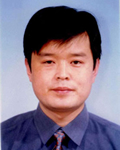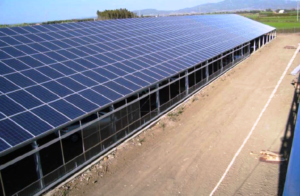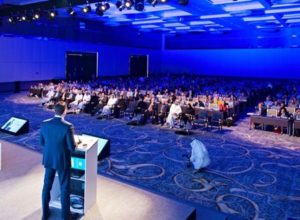China: Investigating Low-Temperature and Low-Cost Solar Cooling Systems
July 31, 2015
Dai Yanjun is among the key solar cooling researchers in China. In cooperation with the IEA Solar Heating and Cooling (SHC) Programme, the professor with more than 15 years of experience in solar cooling research at the Shanghai Jiao Tong University (SJTU) organised the Solar Cooling Week in Shanghai in March. Since 2005, he is Professor at the Institute of Refrigeration and Cryogenics and sees the most promising research being done in the field of thermally driven chillers which fit to standard flat plate and vacuum tube collectors on the market. He also participates in the development of solutions for areas with high humidity.
 At the SJTU, solar cooling has been a research topic since 1999. It has now been three years since China joined the IEA SHC programme. At the first IEA SHC conference held in Beijing in October 2014, Dai presented the key research projects of his university (see the attached paper). Dai sees the following two main approaches for solar cooling: First, there are the new chillers with low operating temperatures. Second, researchers are working on collectors which can operate in higher temperature ranges. “The former is more meaningful and adaptive for China because nearly all solar collectors on the market are ordinary flat plate or evacuated tube collectors,” Dai says.
At the SJTU, solar cooling has been a research topic since 1999. It has now been three years since China joined the IEA SHC programme. At the first IEA SHC conference held in Beijing in October 2014, Dai presented the key research projects of his university (see the attached paper). Dai sees the following two main approaches for solar cooling: First, there are the new chillers with low operating temperatures. Second, researchers are working on collectors which can operate in higher temperature ranges. “The former is more meaningful and adaptive for China because nearly all solar collectors on the market are ordinary flat plate or evacuated tube collectors,” Dai says.
Adsorption chillers driven by heat from commonly used collectors
Hence, one key project of the SJTU was the development of a silica gel adsorption chiller which can be used with collectors that provide heat at 60 to 90°C and are commonly employed for heating domestic water. In tests with hot water temperatures of 70 to 80 °C, the system produced chilled water with 10 to 15 °C and a COP of 0.5.
According to the attached paper, the advantage of the new design is that it only uses one vacuum valve to reduce the number of moving parts – leading to less leakage and improved system reliability. Up to now, more than 30 units of this chiller have been manufactured in a joint effort by SJTU and companies Jiangsu Shuangliang and Shandong Lucy New Energy Technology. The units’ cooling powers were 5 kW, 10 kW, 15 kW, 20 kW and 50 kW. The chiller has been utilised in several projects. The first one was finished in Shanghai in 2004; the most recent is a 50 kW solar cooling plant at the Auhua New Energy Co in Weihai, Shangdong province. The coolers are commercially available, “but with Chinese Yuan (CNY) 3,000 to 8,000 (EUR 440 to 1,170) per kW still rather expensive,” as Dai puts it.
Desiccant cooling system for humid climate
As wide areas of China have to deal with a humid climate, the SJTU researchers have recently developed a new type of two-stage desiccant cooling system which is combined with flat plate solar collectors. According to the attached paper, the researchers work on a one-stage and a two-stage process. With the two-stage process, moisture of about 6 g/kg can be removed at temperatures of 70 °C instead of 100 °C as was the case with former devices. The one-step system was developed later and brings a reduction in size, making it about half as big as the two-stage system. “This would be of great benefit to the promotion of rotary desiccant air conditioning system in residential buildings,” Dai explains.
With its huge and low-cost solar thermal market, China grants no subsidies for solar thermal energy as such. But incentives are available for green buildings and industrial energy saving, which indirectly supports solar cooling technologies. It is expected that by 2020, there will be 800 million m2 of solar collectors in China, which will entail solar water heaters, solar heating, solar cooling and industrial heating.
More information:
en.sjtu.edu.cn/research/centers-labs/moe-engineering-research-center-of-solar-power-refrigeration


